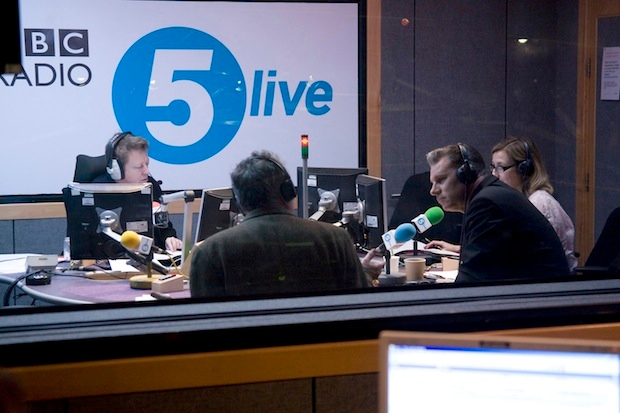It’s amazing to think that it’s 20 years since the launch of Radio 5 Live. But it was bright and early on the morning of 28 March 1994 (long before Princess Diana’s death, 9/11, the Iraq war, the London bombs, the Asian tsunami, the ‘Arab spring’) that Jane Garvey announced, ‘Welcome to a new network.’ Not an impersonal statement, ‘This is Radio 5 Live’, as you might have expected from the BBC. But an inviting ‘Welcome’. Come in. Join us. We want to hear from you, just as much as you are going to hear from us.
Interaction was what gave the station its USP, its distinctive character. Yet this was more than a decade before Twitter, Tumblr, Buzzfeed really took off. Mobile phones were still big, awkward, boxy things to use, with no internet access and no keyboard; iPads and tablets were off the radar.
The BBC was ahead of the game in realising that audience participation was essential to 5 Live’s success and the station now feels as much part of the Corporation’s radio output (with a weekly audience of 6.53 million) as the more aloof and statesmanlike 4 (with a weekly audience of 11.21 million). Yet it seems no time since we were wondering how a station could survive on nothing but news and sport — no comedy to lighten the mix, no music, no dramas, no stories — and for 24 hours, 1,440 minutes, each and every day. When it first aired there were no chatlines and webcams. It was long before podcasting, streaming, downloading. Before texting, too, had really taken off — mobile phones were used for talking to people, not sending them cryptic messages. How, you might ask, was the new station supposed to carry out its mission to communicate more with its listeners?
Through its speech-radio pros, of course.








Comments
Join the debate for just £1 a month
Be part of the conversation with other Spectator readers by getting your first three months for £3.
UNLOCK ACCESS Just £1 a monthAlready a subscriber? Log in